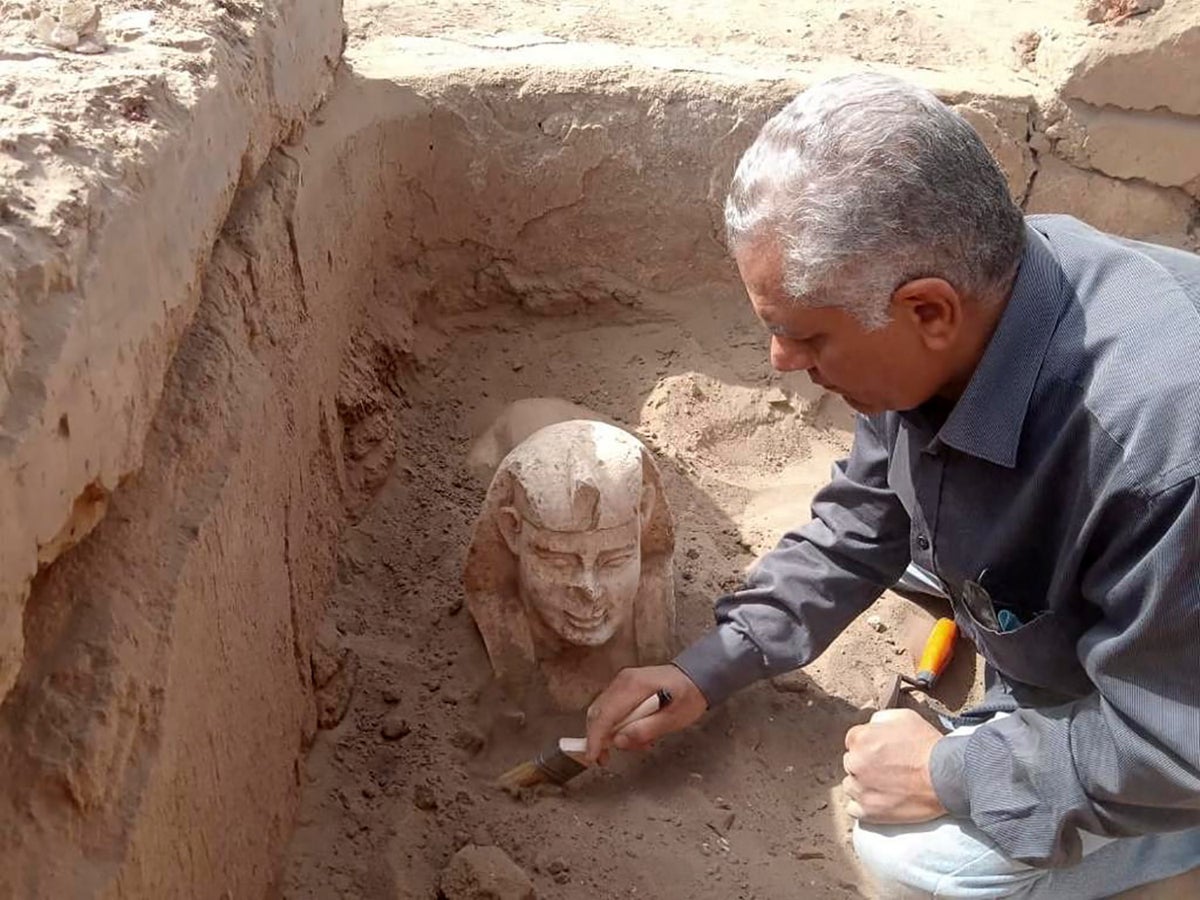‘Mini Sphinx’ statue with a ‘soft smile’ and two dimples unearthed in Egypt

A new sphinx-like statue that may be a depiction of the Roman emperor Claudius has been unearthed in Egypt, the country’s tourism and antiquities ministry said on Monday.
The statue has meticulously detailed facial features, including a light smile on the lips and two dimples on the ends, according to Mamdouh Damati, professor of archaeology at Ain Shams University.
The statue was described as having “royal features” and a “soft smile”, according to the Egyptian ministry, quoting Dr Mamdouh Damati, former minister of archeology and professor of archeology at Ain Shams University.
Researchers also found remains of a limestone cabin dating back to the Roman era in the area located east of the Temple of Dandra in Qena, where a temple of the god Horus was erected at the time.
Qena is a southern Egyptian city about 450km south of Cairo on the eastern banks of the River Nile.
The cabin’s remains are a platform consisting of two levels with a foundation and steep floors.
Inside this, researchers found a basin for storing water from red brick covered with slate with stairs dated back to the Byzantine era.
While cleaning the basin, they found the sphinx-like limestone statue of a royal they suspect likely belonged to Claudius, who extended Rome’s rule into North Africa between 41 and 54 AD.
An undated handout photo made available by the Egyptian Ministry of Antiquities on 6 March shows a Sphynx statue unearthed during excavation work at the eastern side of Dendara Temple in Qena governorate, Egypt
(EPA)
Claudius is also known for leading the Roman empire during its successful conquest of Britain, capturing significant portions of the island, including most of England and Wales.
Archaeologists, however, are unsure if the new statue, which is much smaller than the iconic Sphinx in the Pyramids of Giza complex that towers over 20 metres, really does belong to the Roman emperor.
Archeologists also spotted remains of yellow and red colours on the statue’s face and a painting from the Roman era in hieroglyphic and demotic below the statue.
They hope to continue excavation in the area and in front of the Isis Gate to reveal the road that connects them.
The latest excavation studies, whose results are yet to be peer reviewed, had started in mid February with a radar scanning of the halls at the temple of Dandra, researchers said.
They plan to conduct more studies on the stone slab to unravel more information on the identity of the person depicted in the statue.
For all the latest Science News Click Here
For the latest news and updates, follow us on Google News.

